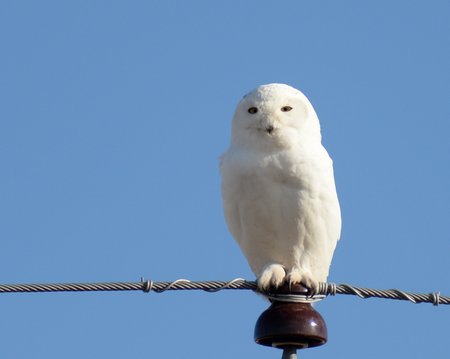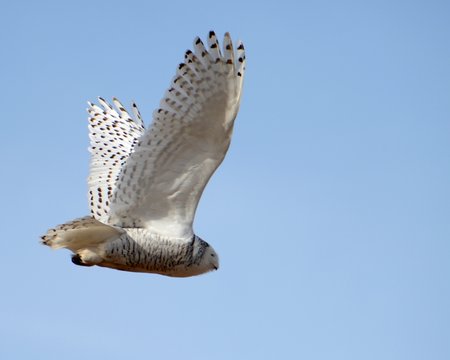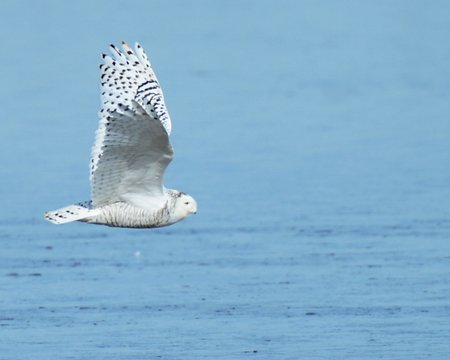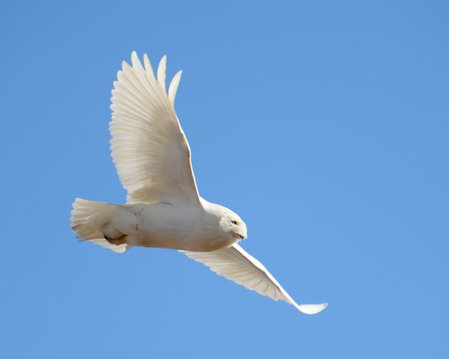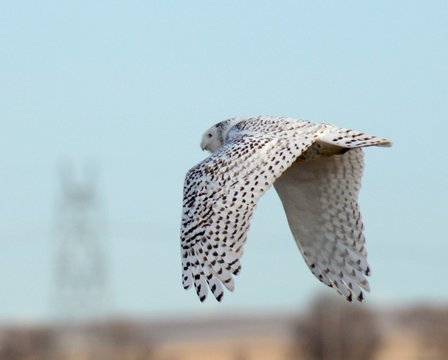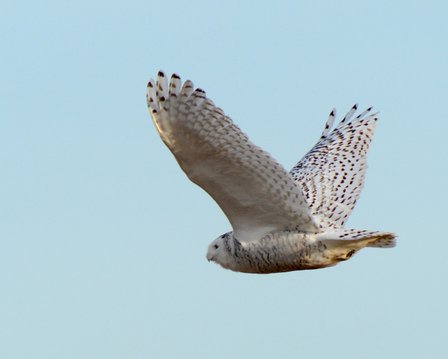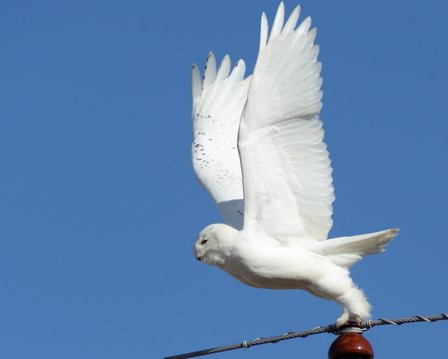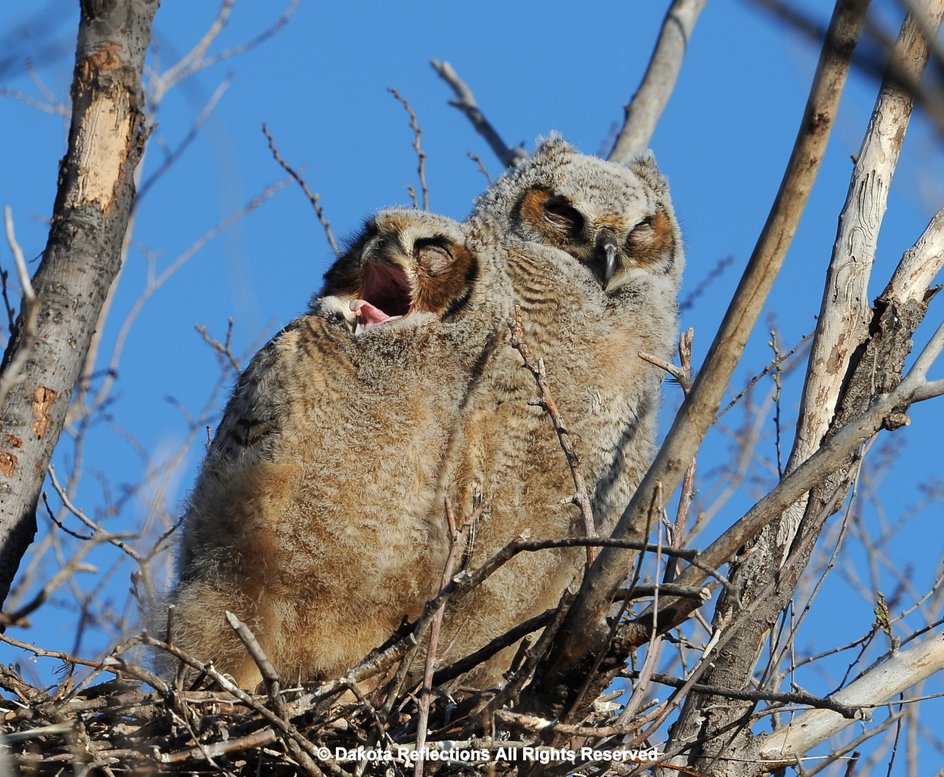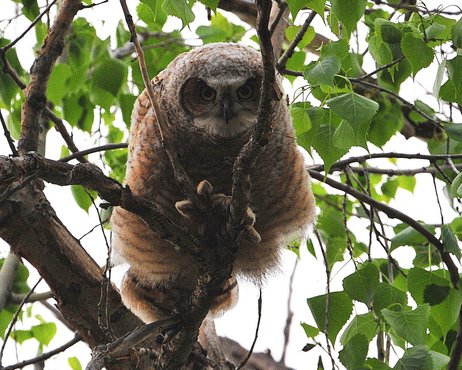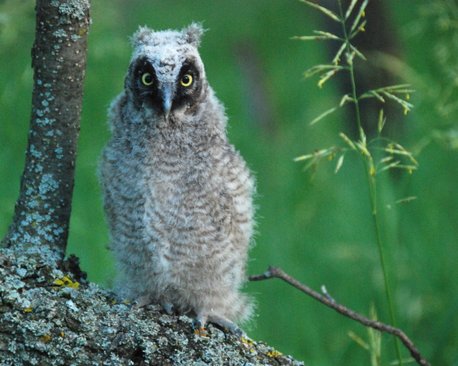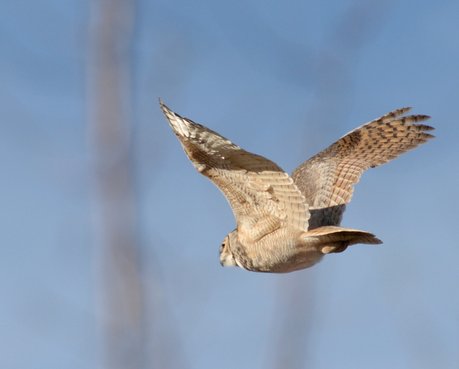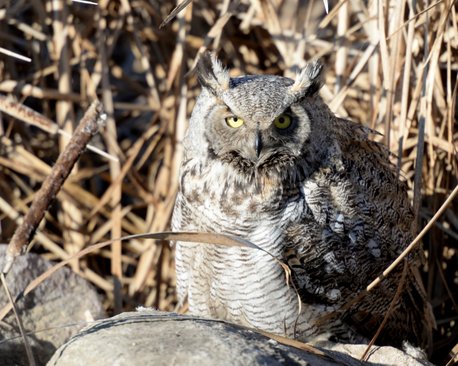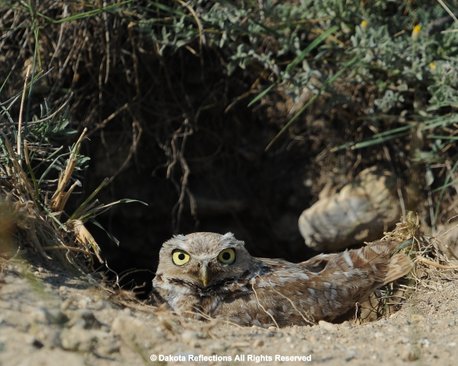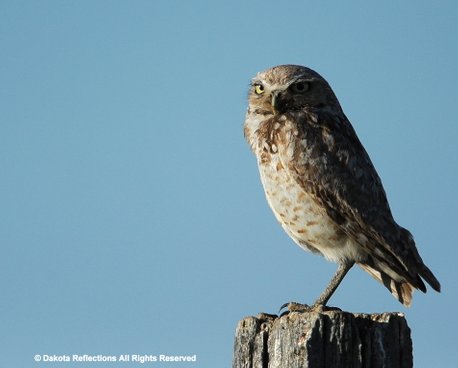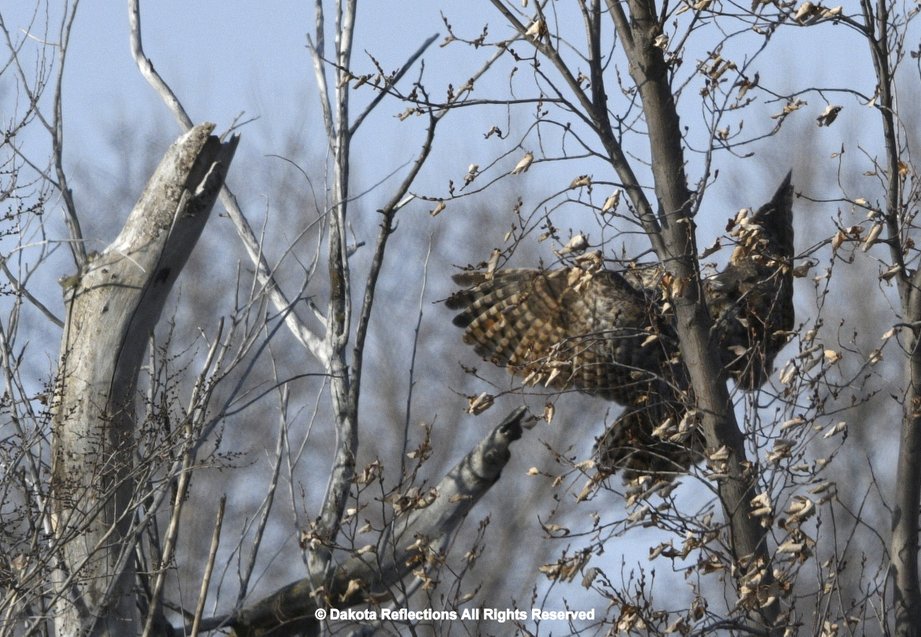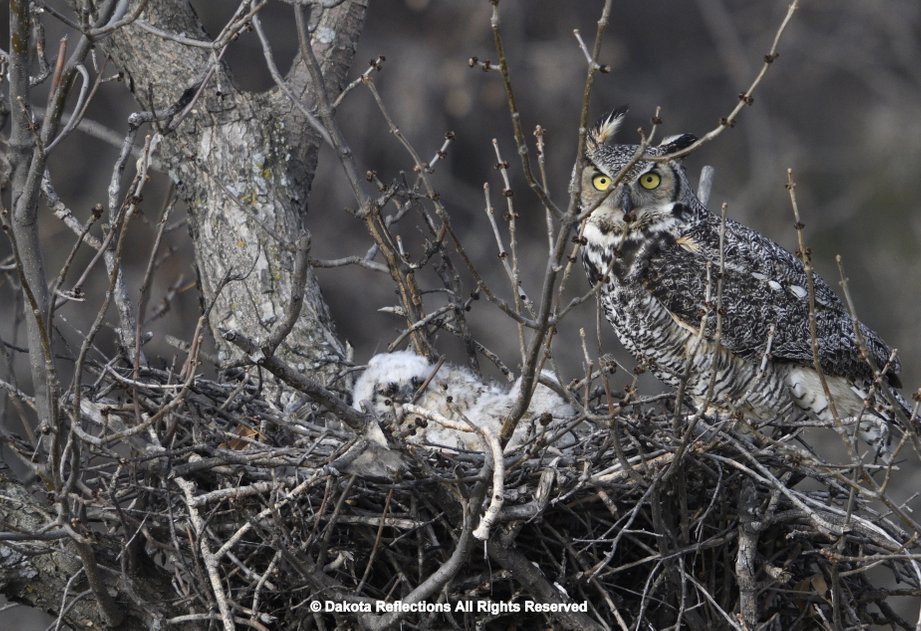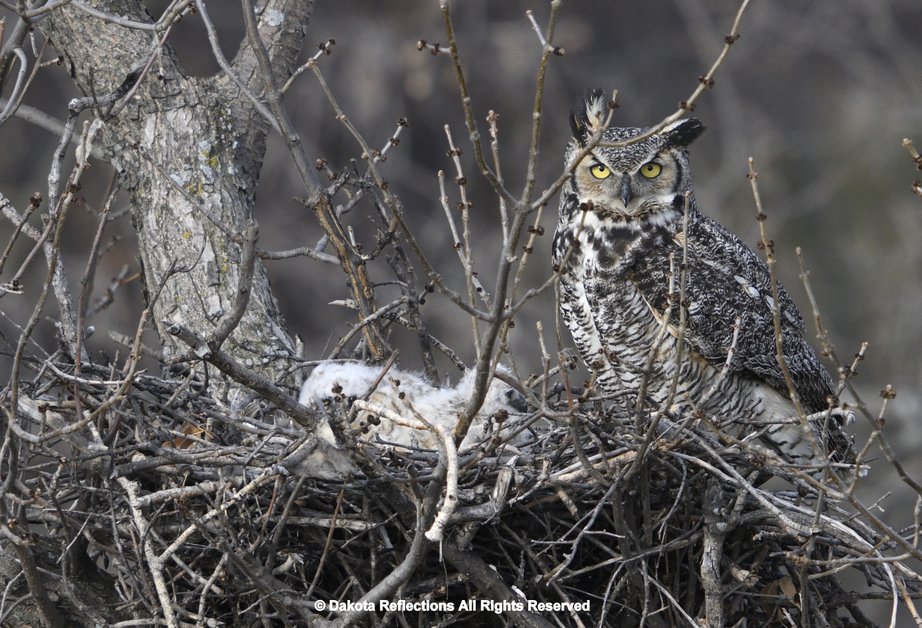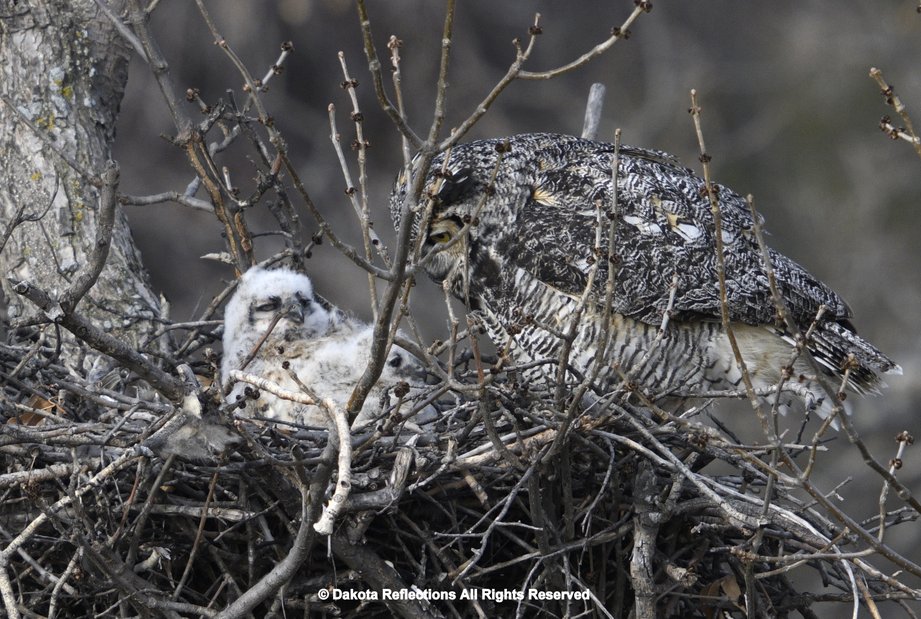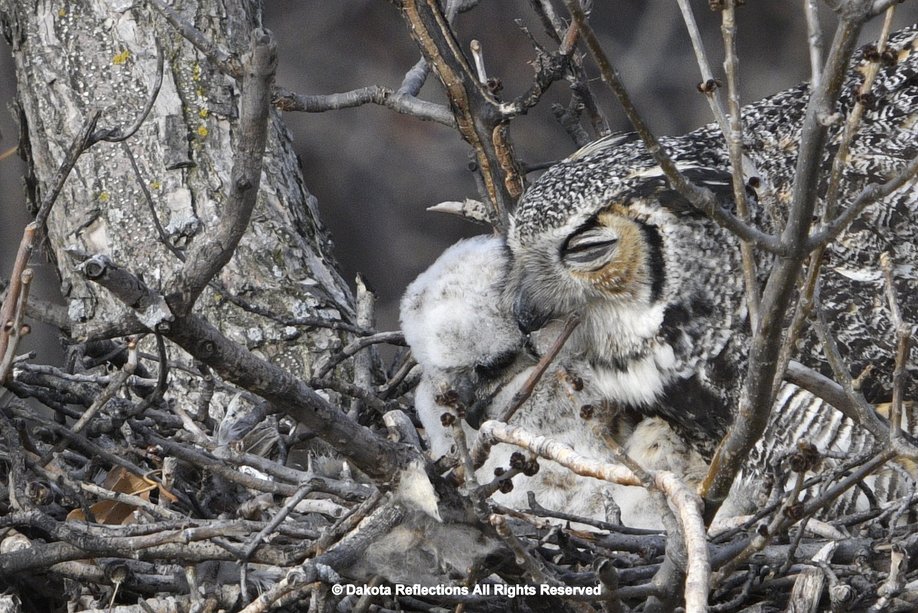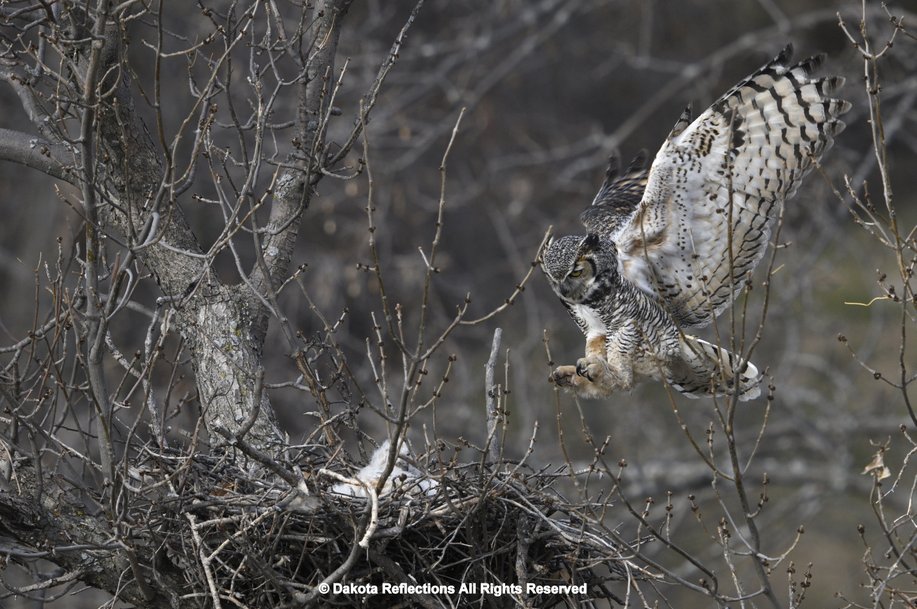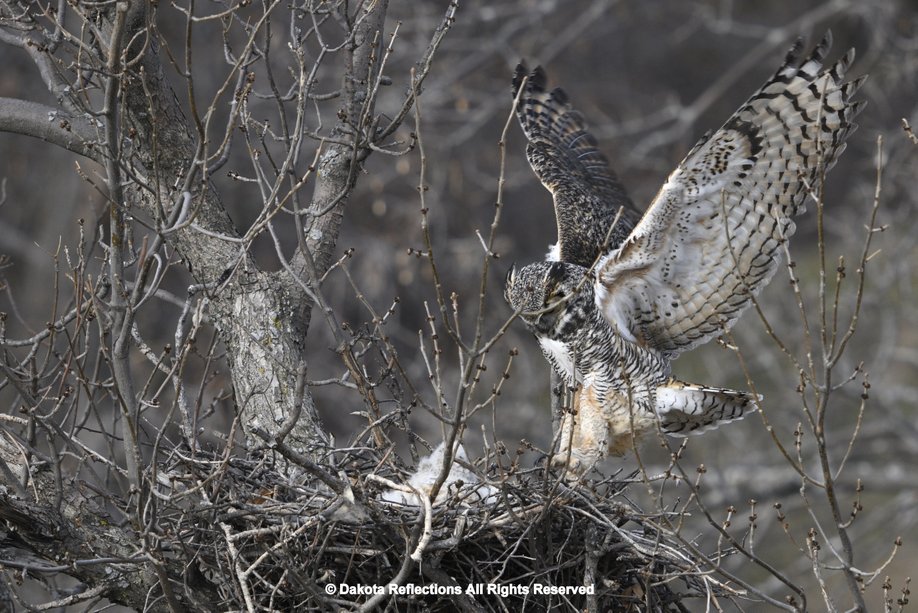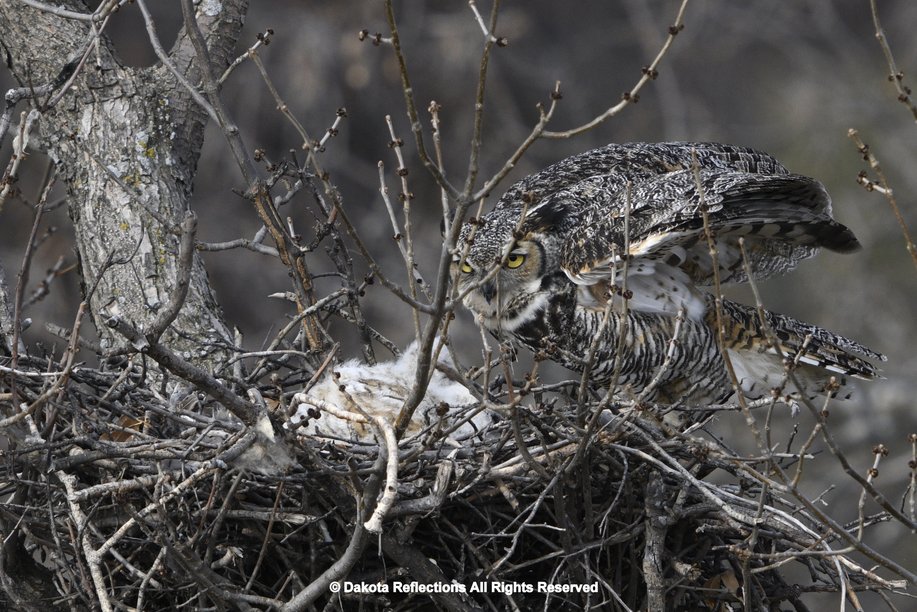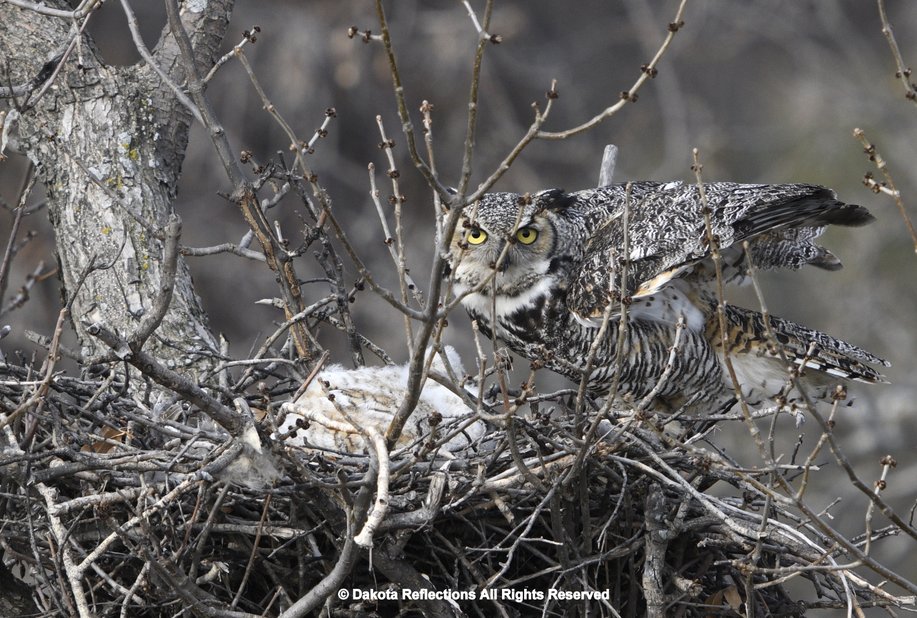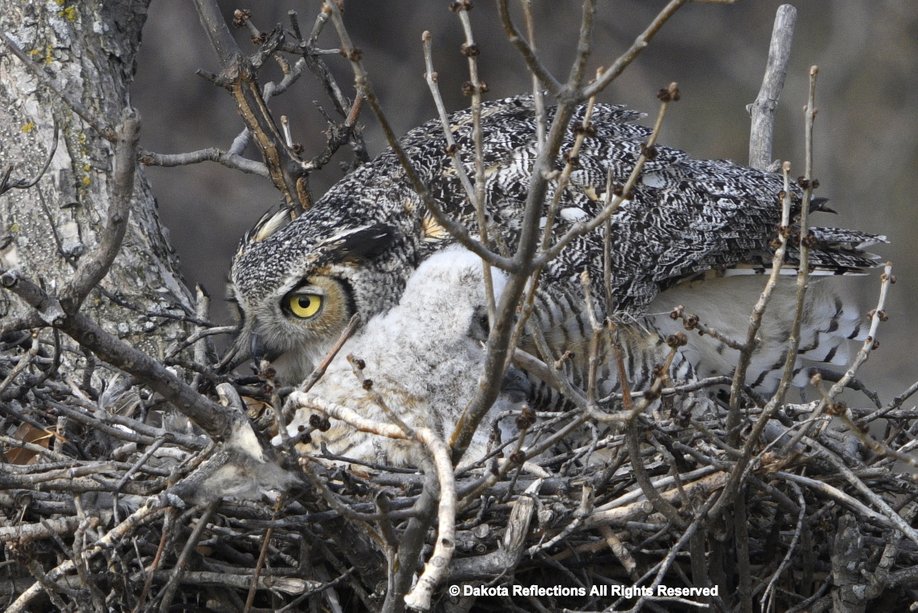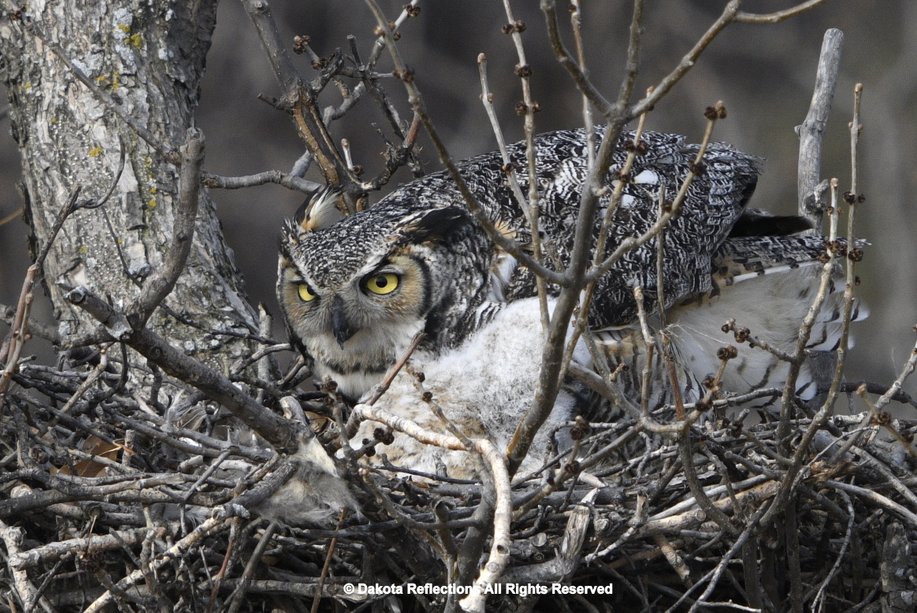Dakota Reflections
Owls
There are about 200 species of owls in the world. Owls are generally solitary nocturnal predators that feed on small small and insects although some species feed on fish. Owls have forward facing eyes with excellent low-light far vision. Their hearing is excellent.
Snowy owls nest in Canada, Alaska and Eurasia at latitudes north of 60 degrees. Occasional south migrations occur due to changes in food sources. Snowy owls are the largest bird species in the Arctic. Females are slightly larger than males. Males are largely white in color white females are darker with black markings. Snowy owls usually nest on elevated ground and have 3- 11 eggs. Snowy owls feed on lemmings, other small mammals and birds. Unlike most owls, snowy owls hunt during the day and night to catch approximately 7 to 12 mice or around 5 lemmings a day.
Snowy Owl
Snowy Owl
Snowy Owl
Snowy Owl
Snowy Owl
Snowy Owl
Snowy Owl
Snowy Owl
Snowy Owl
Great horned owls nest in a wider variety of nest sites than any other North American bird. Nests are often in hollows of dead trees, cliff ledges, small caves, and other sheltered depressions may be used.
Great Horned Owl
Great Horned Owl
Long-eared Owl Owlet
Burrowing Owl
Great Horned Owl
Great Horned Owl
Burrowing Owl
Burrowing Owl
Great Horned Owl
The spotted owlet is a small owl which breeds in tropical Asia from mainland India to Southeast Asia. A common resident of open habitats including farmland and human habitation, it has adapted to living in cities. They roost in small groups in the hollows of trees or in cavities in rocks or buildings. It nests in a hole in a tree or building, laying 3–5 eggs. They are often found near human habitation.
https://en.wikipedia.org/wiki/Spotted_owlet
The Brown Fish Owl inhabits the warm subtropical and humid tropical parts of continental Asia and some offshore islands. Of the four living species of fish owl, it is the most widely distributed, most common and best-studied. It occupies a range of over 7,000 km (4,300 mi) from eastern China to Palestine. Brown fish owl primarily hunt by stationing itself on a rock overhang or hanging perch over water, or by wading into shallow waters. It grabs food by gliding over the water, nearly skimming it with its feet and grabbing its prey by quickly extending its long legs. It feeds mainly on fishes, frogs and aquatic crustaceans, especially Potamon crabs. It usually selects the larger freshwater fish available in waterways.
https://en.wikipedia.org/wiki/Brown_fish_owl
The Oriental Scops-Owl is a small owl with an extremely wide distribution across eastern and southern Asia, and is found in dry deciduous forests from the Russian Federation to Thailand. The owl nests in holes in trees during February–April.
The Asian barred owlet is a species of true owl, resident in northern parts of the Indian Subcontinent and parts of Southeast Asia. It ranges across north central and northeast India, Nepal Bhutan, north Bangladesh, and southeast Asia (Myanmar, Thailand, Cambodia, Laos, Vietnam). Its natural habitat is temperate forest.
https://en.wikipedia.org/wiki/Asian_barred_owlet
2020 Photographs
Great Horned Owl
Burleigh County, North Dakota
April 19, 2020
Great Horned Owls
Oliver County, North Dakota
April 26, 2020
The great horned owl, also known as the tiger owl or the hoot owl, is a large owl native to the Americas. It is an extremely adaptable bird with a vast range and is the most widely distributed true owl in the Americas. Its primary diet is rabbits and hares, rats and mice, and voles, although it freely hunts any animal it can overtake, including rodents and other small mammals, larger mid-sized mammals, birds, reptiles, amphibians, and invertebrate. The great horned owl is one of the earliest nesting birds in North America, often laying eggs weeks or even months before other raptorial birds. Great horned owls are some of the earliest-breeding birds in North America, seemingly in part because of the lengthy nightfall at this time of year and additionally the competitive advantage it gives the owl over other raptors. In most of North America, courtship is from October to December and mates are chosen by December to January. Nests with open access, considering this birds large size, as opposed to enclosed with surrounding branches, are preferred. Like all owls, great horned owls do not build their own nest. Great horned owls tend to examine an area for an abandoned nest, generally from larger birds like hawks, and take over the nest for raising their own young. They nest in a wider variety of nest sites than any other North American bird. Many nests are in cavernous hollows of dead trees or their branches, especially in southern states in large trees along the edge of old-growth lots. In mountainous or hilly areas, especially in canyons of the southwest and Rocky Mountains, cliff ledges, small caves, and other sheltered depressions may be used. Owls living in prairie country, in the absence of other animals' nests, riparian trees or non-native trees or the bare ground of tree hollows or man-made structures, will use boulders, buttes, railroad cuts, low bushes and even the bare ground as nest sites. There are usually 2 eggs per clutch, but clutches range in size from 1 to 6 eggs (over 3 is uncommon, over 4 is very rare), depending on environmental conditions. The young weigh around 34.7 g (1.22 oz) at birth on average and can gain an average of about 33.3 g (1.17 oz) a day for the first four weeks of life, with typical weights in the range of 800 or 1,000 g (1.8 or 2.2 lb) by 25–29 days for males and females, respectively. When first hatched the young are covered in whitish gray down, with some brownish about the wings. Gradually the soft juvenal downy plumage comes through the down, being typically a cinnamon-buff color, but with variable hues predicting the eventual color of the mature owls. The extent of down gradually diminishes, developing mature-looking plumage by late summer, although many first-year birds still have scattered bits of down into autumn. By late autumn, first-year birds look similar to adults but with a slightly warmer, reddish tinge, less well developed ear tufts and a smaller white throat patch. The nestling owls develop mostly in behavior between two weeks and two months of age, in which time they adapt the ability to defend themselves, grasp foods and climb. Vocally, the young are able to exert weak chips while still in the egg, developing into a raspy chirp shortly after hatching. The calls of the young increase rapidly in intensity, pitch and character, some juvenile males mimicking their father's hooting in fall but usually they conclude with various odd gurgling notes. The earliest competent hooting by juvenile owls is not until January. Young owls move onto nearby branches at 6 weeks and start to fly about a week later. However, the young are not usually competent fliers until they are about 10 to 12 weeks old. The age at which the young leave the nest is variable based on the abundance of food.
https://en.wikipedia.org/wiki/Great_horned_owl
Great Horned Owls
Oliver County, North Dakota
April 26, 2020
Great Horned Owls
Oliver County, North Dakota
April 26, 2020
Great Horned Owls
Oliver County, North Dakota
April 26, 2020
Great Horned Owls
Oliver County, North Dakota
April 26, 2020
Great Horned Owls
Oliver County, North Dakota
April 26, 2020
Great Horned Owls
Oliver County, North Dakota
Photo of the Day- April 26, 2020
Great Horned Owls
Oliver County, North Dakota
April 26, 2020
Great Horned Owls
Oliver County, North Dakota
April 26, 2020
Great Horned Owls
Oliver County, North Dakota
April 26, 2020
Great Horned Owls
Oliver County, North Dakota
April 26, 2020
Great Horned Owls
Oliver County, North Dakota
April 26, 2020
Great Horned Owls
Oliver County, North Dakota
April 26, 2020
Great Horned Owls
Oliver County, North Dakota
April 26, 2020
2021 Photographs
Snowy Owl
Kaska Coast, Hudson Bay, Manitoba, Canada
November 18, 2021
Snowy Owl
Kaska Coast, Hudson Bay, Manitoba, Canada
November 18, 2021
Snowy Owl
Kaska Coast, Hudson Bay, Manitoba, Canada
November 18, 2021


